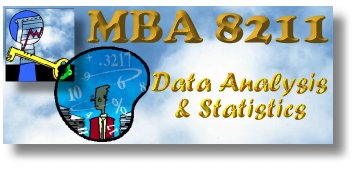

If some of the topics we covered in this class intrigued you, there are some really interesting books that I would recommend you add to your reading list. Here are some of my favorite books on the topics we covered in this class. None of these are hardcore statistics books and mostly just cover the implications of innumeracy and non-statistical thinking on social, political, and public policy issues. All of them are written for the masses and should prove to be enjoyable reading. Any comments on these readings (after you go through them) will be welcome and I will add your reviews to this site.
How to Lie With Statistics; 1954; Darrell Huff; W.W. Norton & Company
Fooled by Randomness: The Hidden Role of Chance in Life and in the Markets; 2005; Nassim Nicholas Taleb; Random House.
The Black Swan: The Impact of the Highly Improbable; 2007; Nassim Nicholas Taleb; Random House.
The Wisdom of Crowds; 2004; James Surowiecki; Random House
Damned Lies and Statistics; 2001; Joel Best; University of California Press
It Ain't Necessarily So: How Media Make and Unmake the Scientifc Picture of Reality; 2001; David Murray, Joel Schwartz, and S. Robert Lichter; Rowman and Littlefield Publishers, Inc.
Calculated Risks: How to Know When Numbers Deceive You; 2002; Gerd Gigerenzer; Simon and Schuster
How to Lie With Charts; 2000; Gerald E. Jones; iUniverse.com, Inc.
The Cartoon Guide to Statistics; 1993; Larry Gonick and Woollcott Smith; HarperCollins Publishers
Statistics for People Who Think They Hate Statistics; 2000; Neil J. Salkind; Sage Publiations, Inc.
What Are The Odds? Lotteries, Blackjack, Zero-Sum Games, and More; 2000; Mike Orkin; Barnes & Noble Books
Flaws and Fallacies in Statistical Thinking; 2004; Stephen K. Campbell; Dover Publications.
Statistics You Can't Trust: A Friendly Guide to Clear Thinking About Statistics in Everyday Life; 1994; Stephen K. Campbell and Mark V. Hall; Bovan Publishing Group
Myths, Lies, & Downright Stupidities; 2006; John Stossel; Hyperion